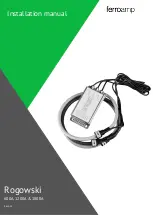
HX210
Page 4
3. ABOUT THIS RADIO
3.1 ABOUT THE VHF MARINE BAND
The radio frequencies used in the VHF marine band lie between 156 and
158 MHz with NOAA Weather stations available between 161 and 163 MHz.
The marine VHF band provides communications over distances that are
essentially “Line of sight” Actual transmission range depends much more
on antenna type, gain and height than on the power output of the transmit-
ter. On a fixed mount 25 W radio transmission expected distances can be
greater than 15 miles, for a portable 5 W radio transmission the expected
distance can be greater than 5 miles in “Line of sight”.
The user of a Marine VHF radio is subject to severe fines if the radio is used
on land. The reasoning for this is you may be near an inland waterway, or
propagation anomalies may cause your transmission to be heard in a wa-
terway. If this occurs, depending upon the marine VHF channel on which
you are transmitting, you could interfere with a search and rescue case, or
contribute to a collision between passing ships. For VHF Marine channel as-
signments refer to section “
9. VHF MARINE CHANNEL ASSIGNMENTS
”.
WARNING
This radio is capable of transmitting on Marine VHF radio frequencies.
The FCC allows the use of VHF Marine band on water areas only. Use of
the VHF Marine band when on land is not permitted. If persons use the
VHF Marine Band on land and interfere with other communications, the
FCC will be notified and search for the interference. Responsible parties
found to be transmitting on the VHF Marine Band on land could be fined up
to $10,000 for the first offense.
3.2 ABOUT WATER PROTECTION
The
HX210
is only submersible
※
when the MIC/SP cap is installed in the
MIC/SP jack.
※
IPX7 Spec
ification for submersibility: 3 ft. (1 m) for 30 minutes.
3.3 DISTRESS AND HAILING (CHANNEL 16)
Channel 16 is designated as the Hail and Distress Channel. An emergency
may be defined as a threat to life or property. In such instances, be sure the
transceiver is turned ON, and set to “Channel 16”. Then use the following
procedure:
1. Press the
PTT
(Push-To-Talk) switch and say “
Mayday
,
Mayday
,
May-
day
. This is _____, _____, _____” (your vessel’s name).
2. Then repeat once: “
Mayday
, _____” (your vessel’s name).
3. Now report your position in latitude/longitude, or by giving a true or mag-
netic bearing (state which) to a well-known landmark such as a naviga-







































